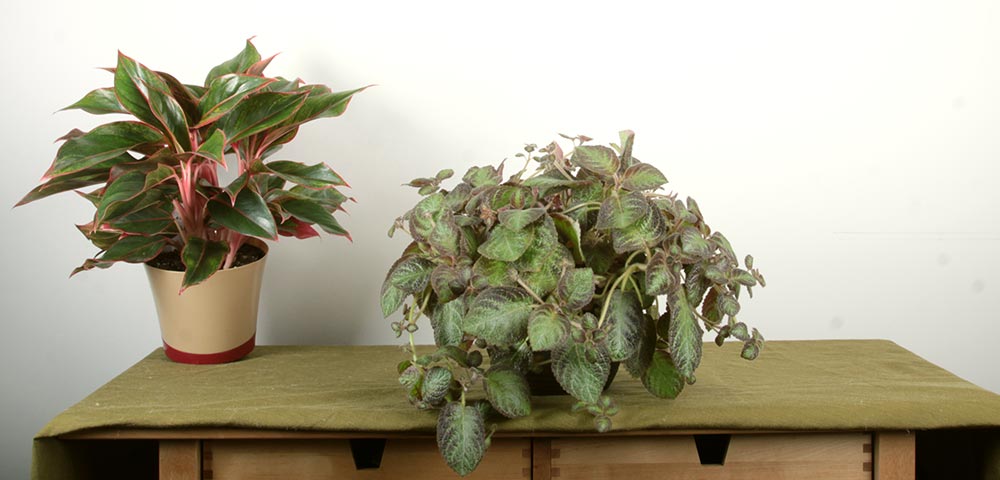Flame Violet (Episcia cupreata)
Flame Violet Plant Features
Flame violet (Episcia) is an adorable small houseplant that offers attractive foliage and charming little trumpet-shaped flowers. A member of the African violet family, it has more of a spreading or trailing shape than its familiar cousins. Instead, it grows more like another close relative: Alsobia (another Exotic Angel® Plants variety). The way it grows makes flame violet an excellent choice for hanging baskets and larger terrariums. It's also beautiful when grown on a desk or tabletop. Be sure to grow it where you can enjoy it -- the small red, pink, orange, or white flowers are delightful, especially against the plant's silver- or bronze-variegated foliage.Able to bloom on and off throughout the year (and attractive even when not in bloom because of its pretty leaves), flame violet is a great plant to give as a gift for Mother's Day, housewarming parties, and for other special events.
Flame Violet Growing Instructions
Grow flame violet in medium or bright light, but protected from direct sun, particularly in the afternoon hours. If this flowering houseplant is in too much direct light, the leaves may suffer from sunburn and look pale or bleached with brown, dry edges. Happily, flame violet doesn't need natural light to thrive. You can also grow this beauty under artificial lights, such as fluorescent shop lights. If you grow your flame violet under shop lights like this, keep the lights running about 12 to 14 hours per day for best blooms.Water flame violets enough to keep the potting mix slightly moist, but never wet or soggy. If the plant stays wet too long, the roots and stems could suffer from rot and die. When watering, it's best to use room-temperature water; like with African violets, cold water that spills on the leaves can unsightly yellow spotting.
Give your flame violet average to high humidity for best growth. In especially dry air, it’s helpful to grow it in a terrarium, kitchen, or bathroom where there’s naturally a little more moisture in the air. You can also cluster it with other houseplants, as plants add moisture to the air as a part of their breathing process. Or, grow it on a pebble tray (ensuring the bottom of the pot stays above the water line).
Fertilize flame violet regularly for best blooms. You can use any general-purpose fertilizer formulated for use on houseplants, but be sure to follow the instructions on the product packaging to know how much and how often to use. With houseplants like flame violet, you can choose between two types of fertilizer: time-release and water-soluble. Use time-release fertilizers twice or three times a year; the product automatically releases nutrients to the plant for you. Mix water-soluble fertilizers into the water periodically when you irrigate your plants.
You typically don't need to worry about pruning flame violet, but you can pinch it back if it ever gets too large for your space. Pruning it back just a little after it finishes blooming can help encourage more blooms more quickly.
Note: Flame violet, like all Exotic Angel® Plants, isn't intended for human or animal consumption.
-
Water
Moist
-
Light
Indoors: High light
Indoors: Medium light
-
Colors
Orange
Pink
Red
Silver
Variegated
Yellow
-
Special Features
Colorful foliage
Purifies the air
Complement your Flame Violet
AlsobiaAlsobia, a close relative of flame violet, likes similar conditions and offers contrasting pure white flowers. It's also part of the Exotic Angel® Plants collection.
Lipstick Plant
Lipstick plant -- another Exotic Angel® Plants variety -- offers similarly colorful flowers and an equally low-care nature. It's also a member of the African violet family.
Codonanthe
Codonanthe is another relative of flame violet that likes the same growing conditions and makes for a fun textural contrast.

